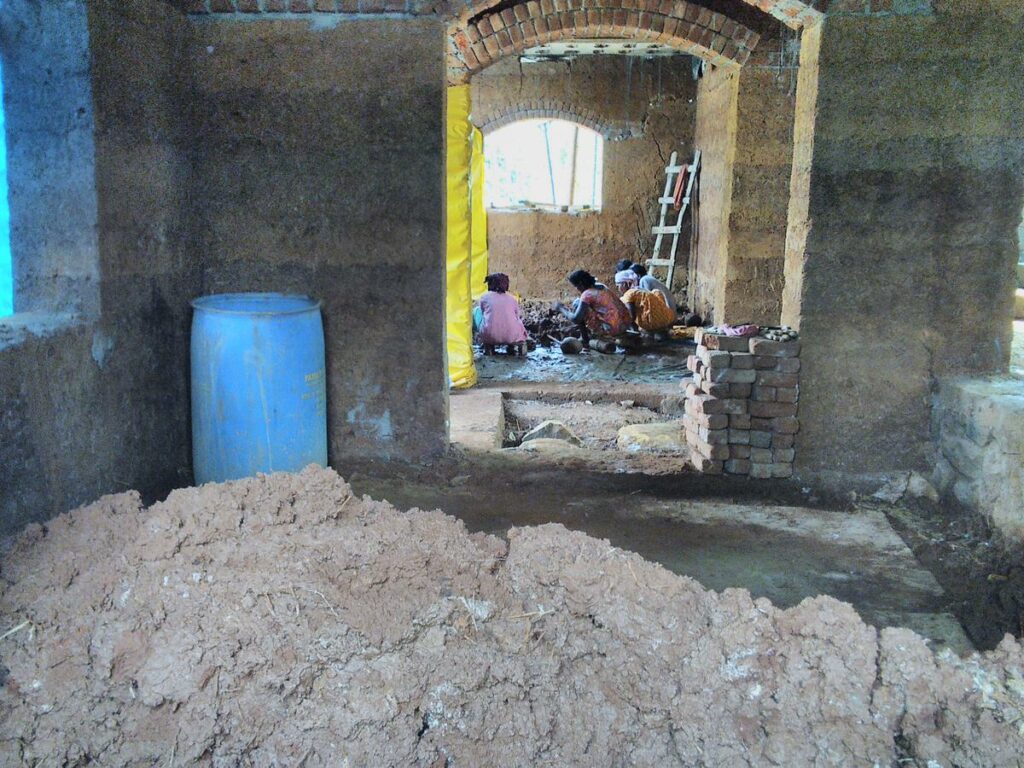Mathews George is building a two-story mud house in Karunapuram village. He emphasizes that mud lasts as long as concrete and it can withstand the attack of termites, ants or other insects. He is also saving on the cost of cement and steel.
Mr George is building on a plot that also has organic crops of cardamom, plantain, pepper, and other crops. The farming venture was his plan when he left a lucrative job at an international bank to live in the lap of nature.
Various techniques can be used in the construction of a mud house. The most viable one is to use locally available materials. Locals have long used bamboo or stick frames plastered with earth to build their houses, a technique called wattle and daub. This resists climate vagaries, and the insides of the houses keep relatively cool. The cost-effectiveness and living conditions make this technique a good alternative to cement houses.
Even though the cost of mud houses is cheaper than that of concrete houses, the labor cost can be higher because the mud has to be mixed with straw and lime dust, and laying the walls is rather labor intensive.
 One of the main techniques in mud-house building is the Cob technique in which the dough of mud is molded into balls, placed side by side, and then layered on the wall. This can be used to make curved walls and can have sculpted features. Mr. George is using the cob method,
One of the main techniques in mud-house building is the Cob technique in which the dough of mud is molded into balls, placed side by side, and then layered on the wall. This can be used to make curved walls and can have sculpted features. Mr. George is using the cob method,
Another technique is rammed earth in which mud is filled between two parallel planks that are then removed. There is also the Adobe method where the mud is squeezed in a mold to form blocks that are then dried under the sun, and used in the same way burnt bricks are used.
Even if the cracks develop in the wall, these can be filled with the same material without affecting the structure.
Mr. George feels his example might encourage many to follow suit. Rising temperatures and climate changes are turning more and more people towards nature friendliness.
Yo can read the original article at www.thehindu.com

Mud bricks-any ideas on hardening them after they have dried? A basic wood-fired kiln? Any one tried making /using a kiln for mud bricks?Thanks
Traditional adobe bricks rely on the straw and clay content to hold them together. But there is usually only about 30% clay and the rest sand, so firing them may not work. When stabilized bricks are needed, typically either a bit of cement or emulsified asphalt is used.